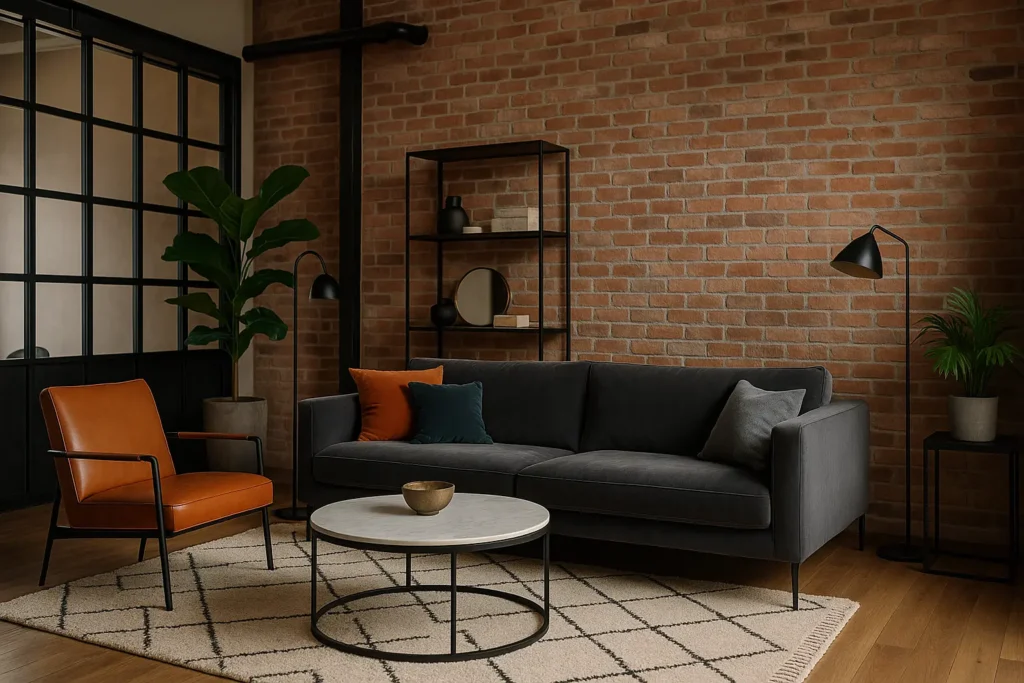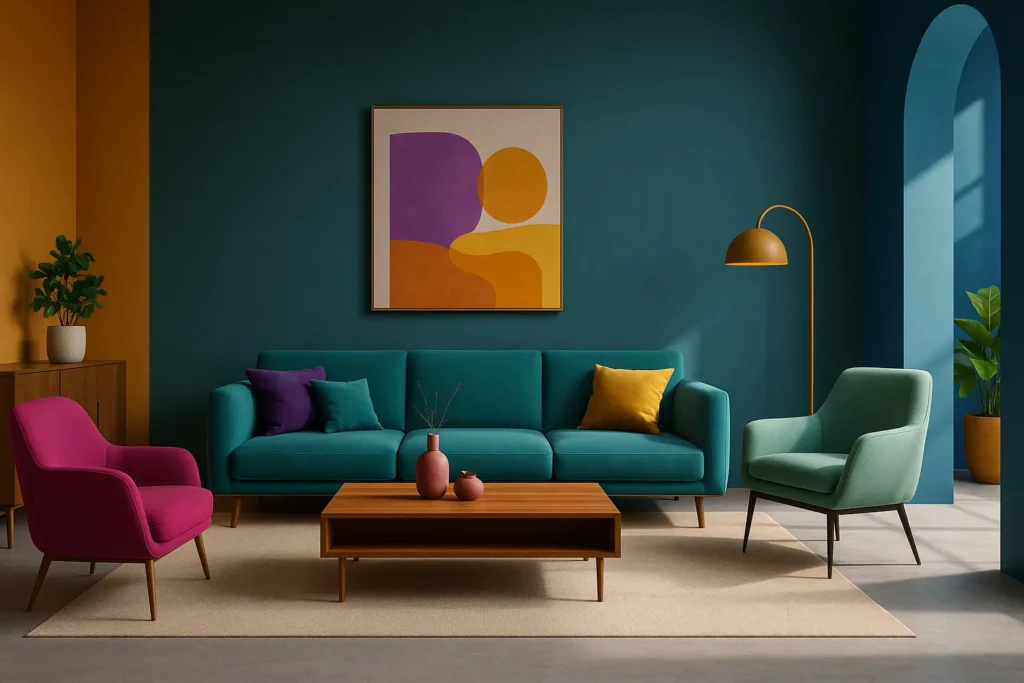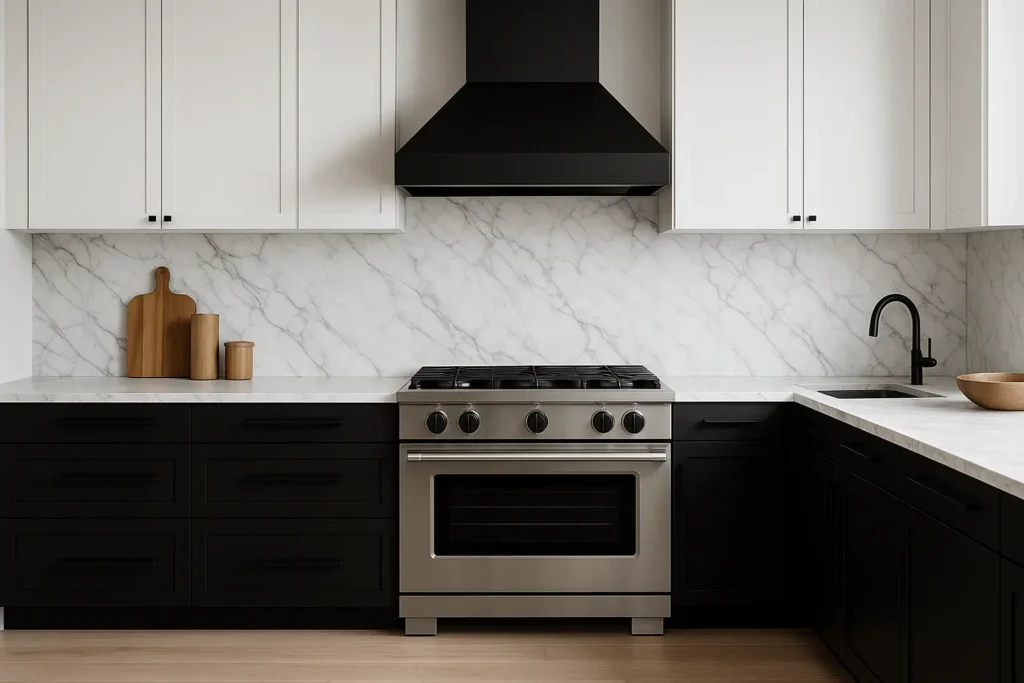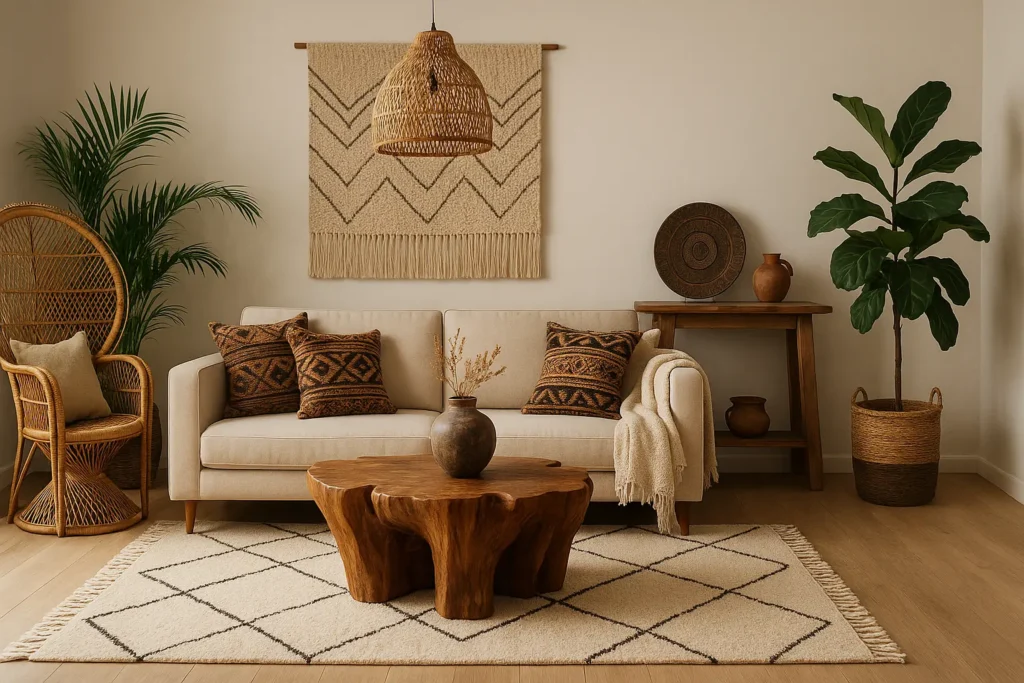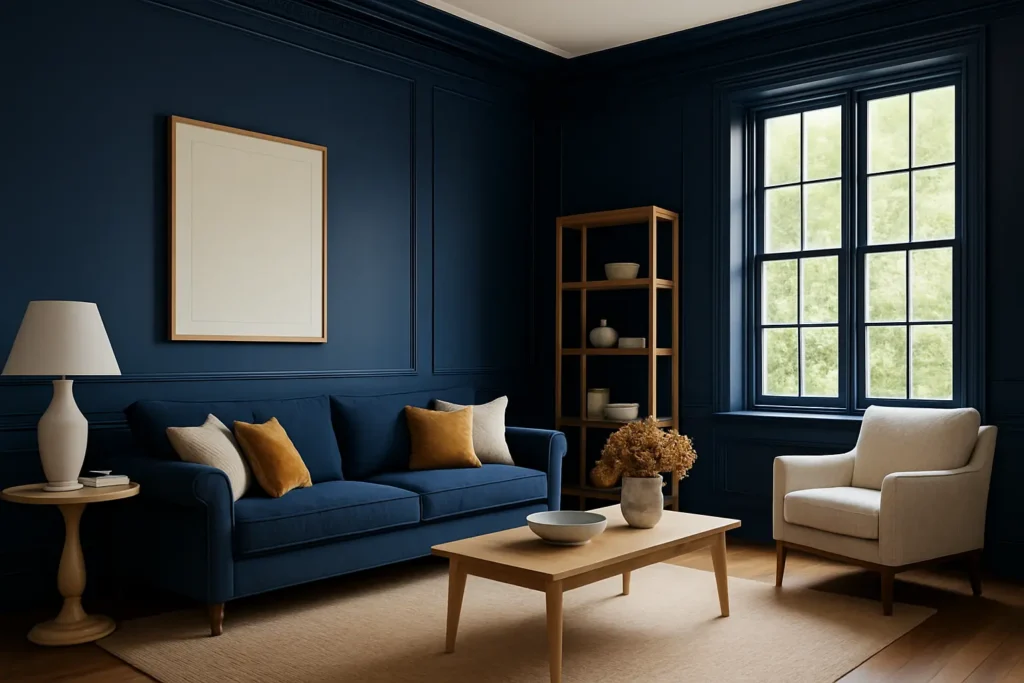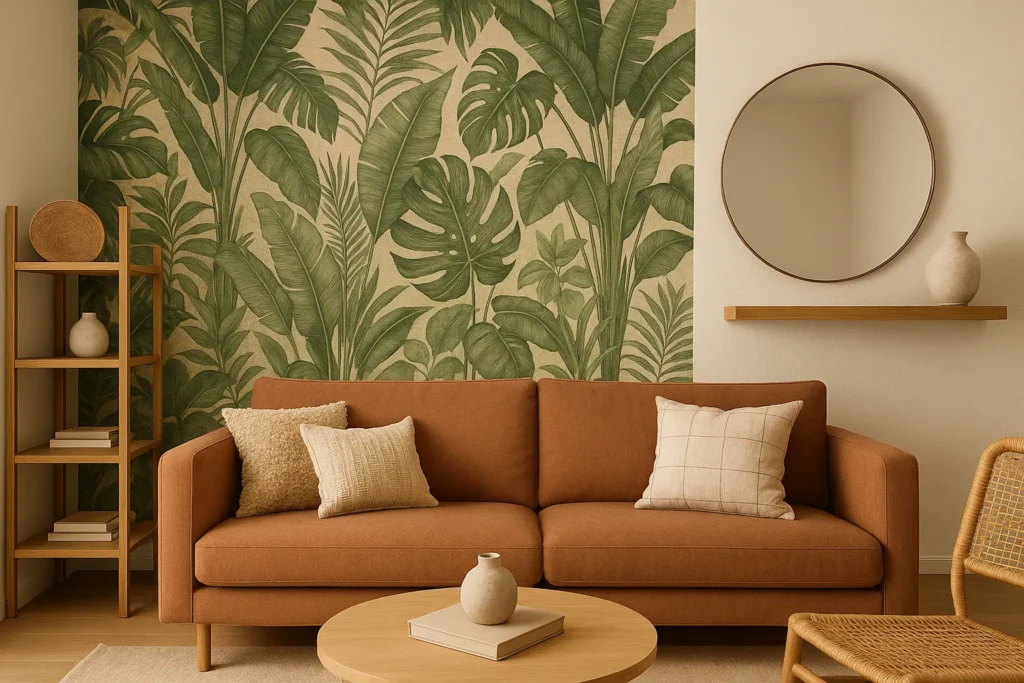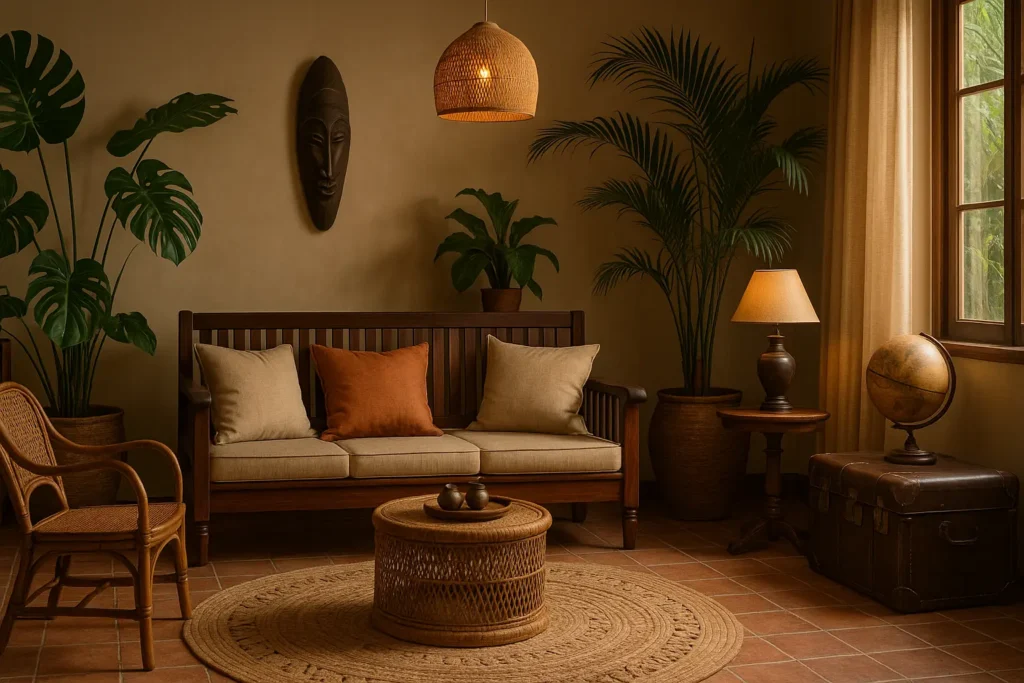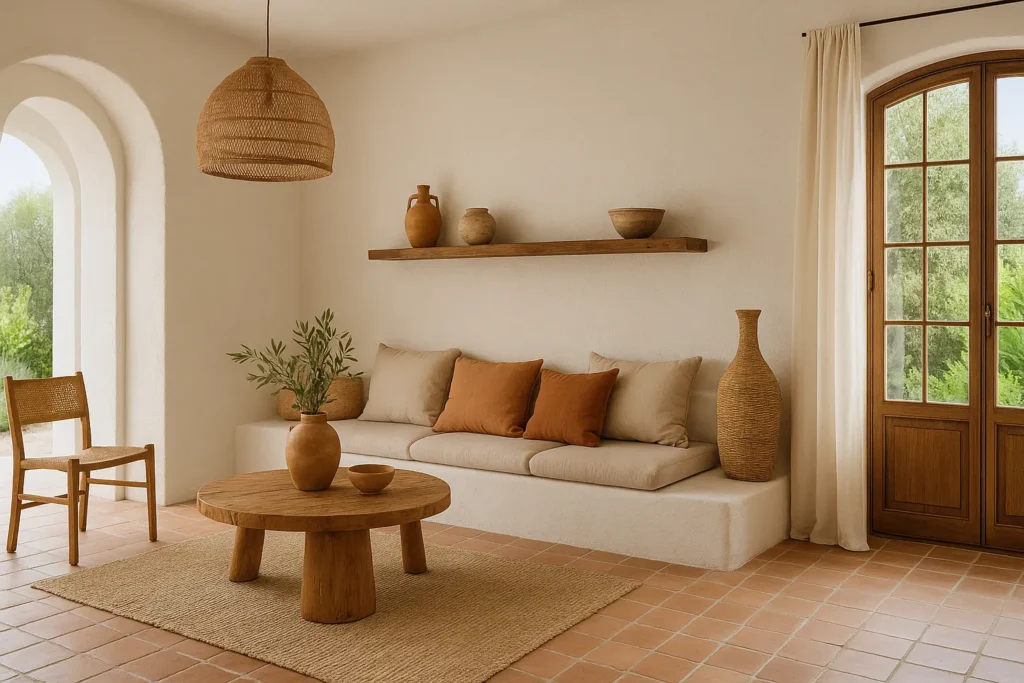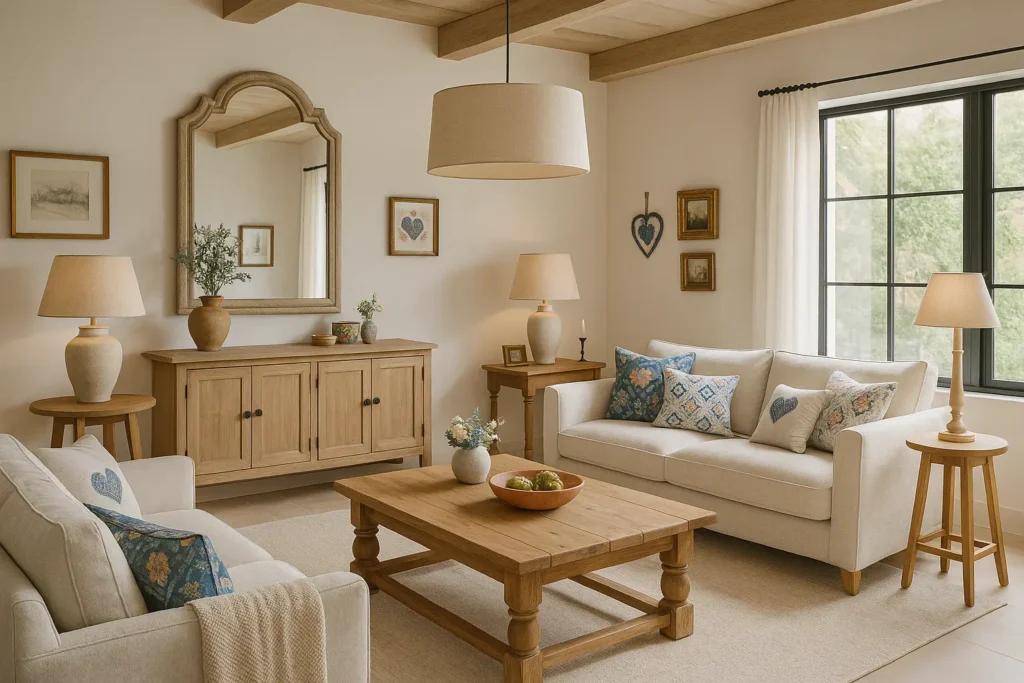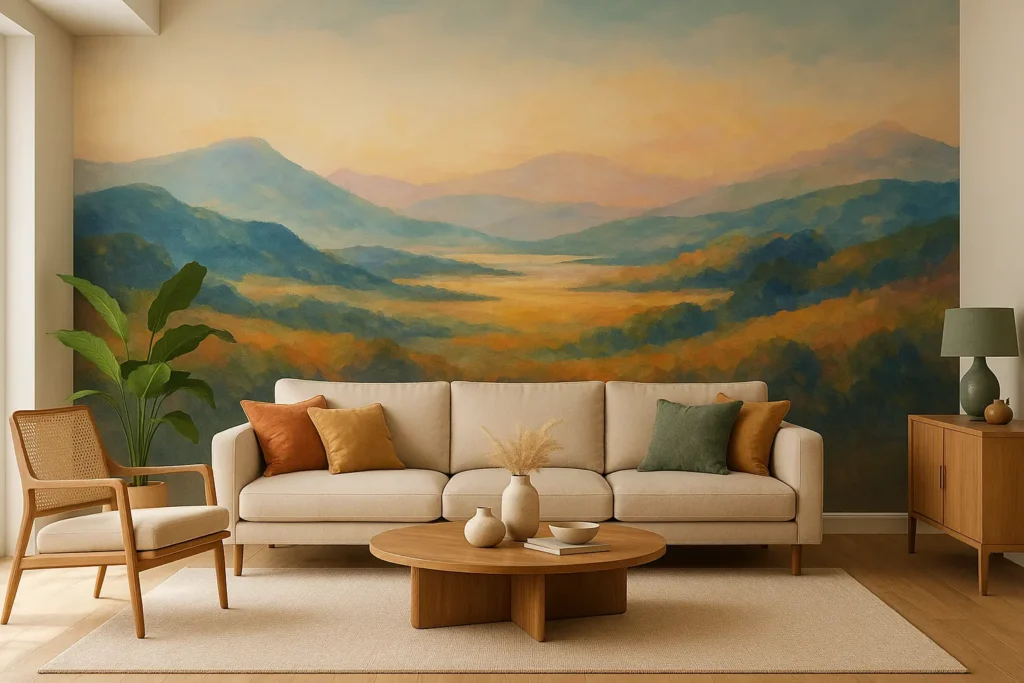Let's dive together into the interesting world of Art Deco style, an aesthetic that continues to seduce us with its timeless elegance. At La Maison Coloniale, we love visiting the styles that have marked the history of decorationArt Deco, with its clean lines and luxurious ornamentation, remains a major source of inspiration for creating interiors that are both sophisticated and warm. Let's explore this iconic movement, from its rich history to its most spectacular architectural expressions.
Our article in brief:
THE Art Deco style seduced by its timeless elegance combining rigorous geometry and luxurious ornamentation since the 1920s.
- Origins and evolution : Born after the First World War, this style geometric and refined reached its peak during the “Roaring Twenties”.
- Distinctive features : Clean lines, geometric patterns and noble materials such as ebony and ivory define the aesthetic of the Art Deco style.
- Global reach : From Miami Beach with its facades vibrant pastels With regional variations such as Streamline Moderne, Art Deco has conquered the world.
- Contemporary heritage : Its influence persists in current design, symbolizing a perfect balance between tradition and modernity.
In this article
Art Deco Style: Origins and Historical Evolution
The Art Deco movement emerged in the 1910s and 1920s, just after World War I. This term, short for "Decorative Arts," takes its name from the International Exhibition of Modern Decorative and Industrial Arts held in Paris in 1925. This style developed in reaction to Art Nouveau, favoring a return to sobriety and order after the decorative excesses of the Belle Époque.
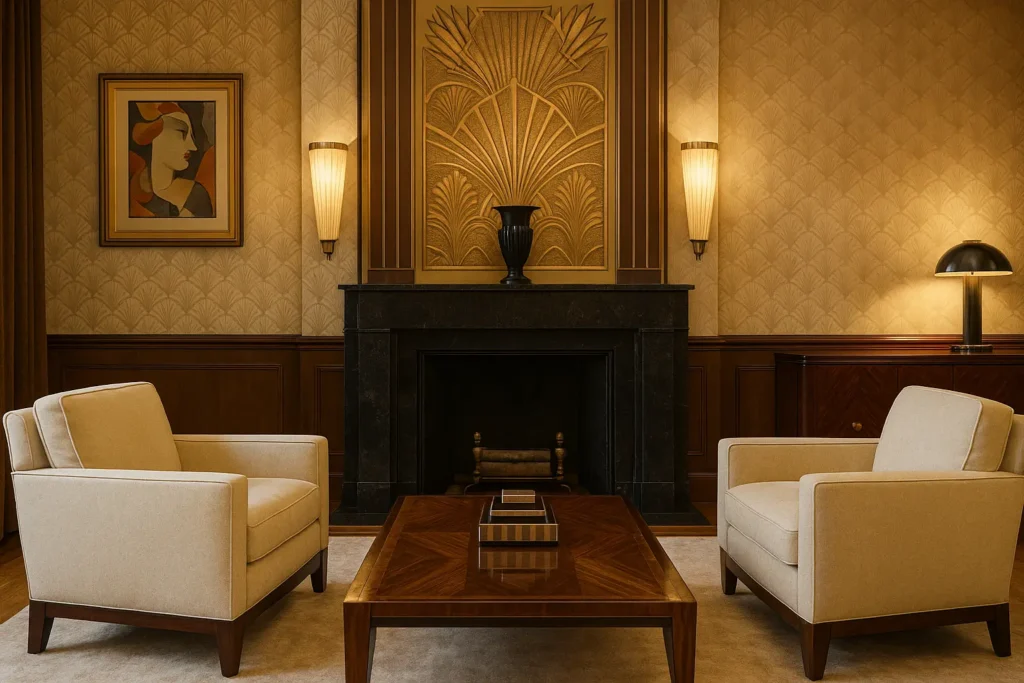
The first manifestations of this aesthetic geometric and refined appeared from 1902-1904 in the creations of Henri Bellery-Desfontaines. The movement reached its peak in the 1920s, this effervescent period nicknamed the "Roaring Twenties". You find in this style a certain resemblance with shabby chic style for its vintage side, but with a much more structured and less romantic approach.
After a gradual decline in the 1930s and 1940s, Art Deco experienced a remarkable renaissance in the 1960s. A new generation of passionate collectors rediscovered the style in the 1980s and 1990s, propelling it back to the forefront of the decorative scene.
Characteristics and distinctive elements of the Art Deco style
Art Deco shapes and patterns
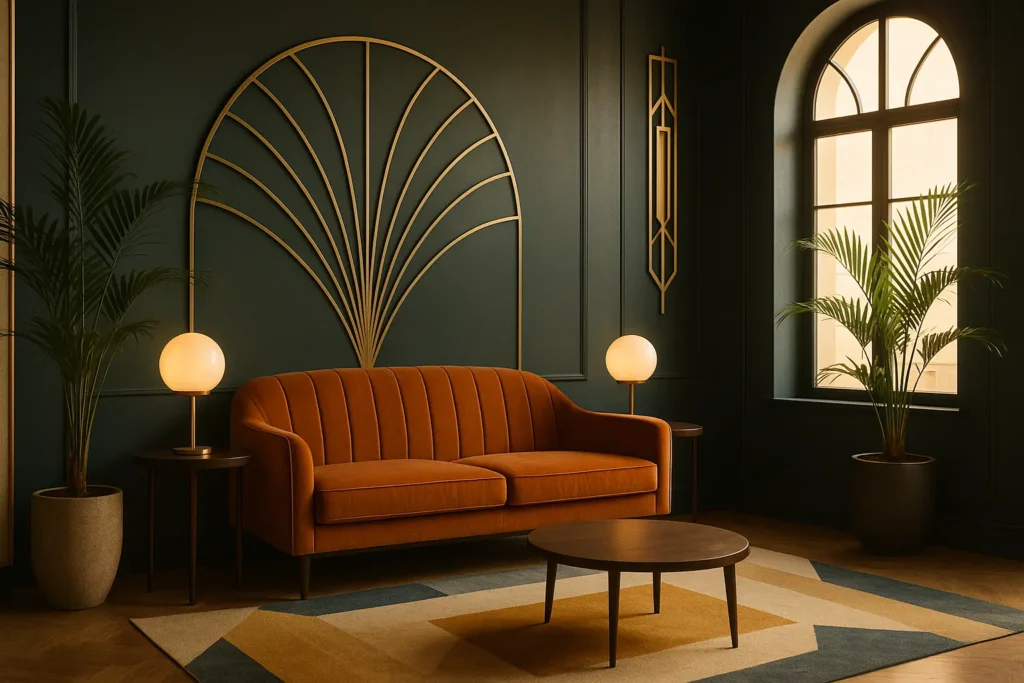
Art Deco style is characterized by its clean geometric lines and its obvious symmetry. Angular shapes, abstract patterns, and minimalism define this unique aesthetic. In architecture, we note the rejection of right angles in favor of canted sides and the use of bow windows to break up the monotony of the facades.
The ornamentation, although refined, remains present through stylized floral motifs, spirals and parallel lines. This decorative approach contrasts beautifully with the philosophy of the wabi-sabi style which celebrates imperfection and simplicity.
- Geometric patterns: zigzags, chevrons, concentric circles
- Solar and radiant ornamentation
- Triangular shapes and cascading elements
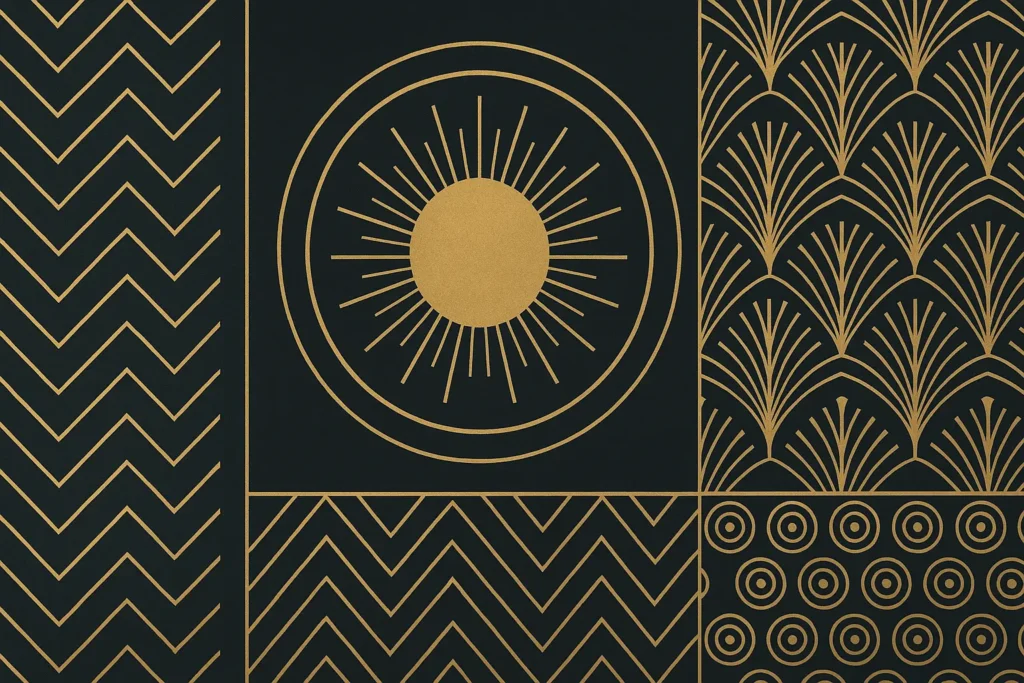
Iconic materials and colors
Luxury is fully expressed in the choice of materials: ebony, ivory, shagreen, lapis lazuli, amazonite, and quartz. The white stone facades contrast with the black lacquered steel joinery, creating a distinct visual signature.
The palette of alternating Art Deco colors between bright hues and pastel shades, often enhanced with chrome accents. For a contemporary touch, you can take inspiration from trending colors 2025 which take up certain codes of this period, notably the powdery shades.
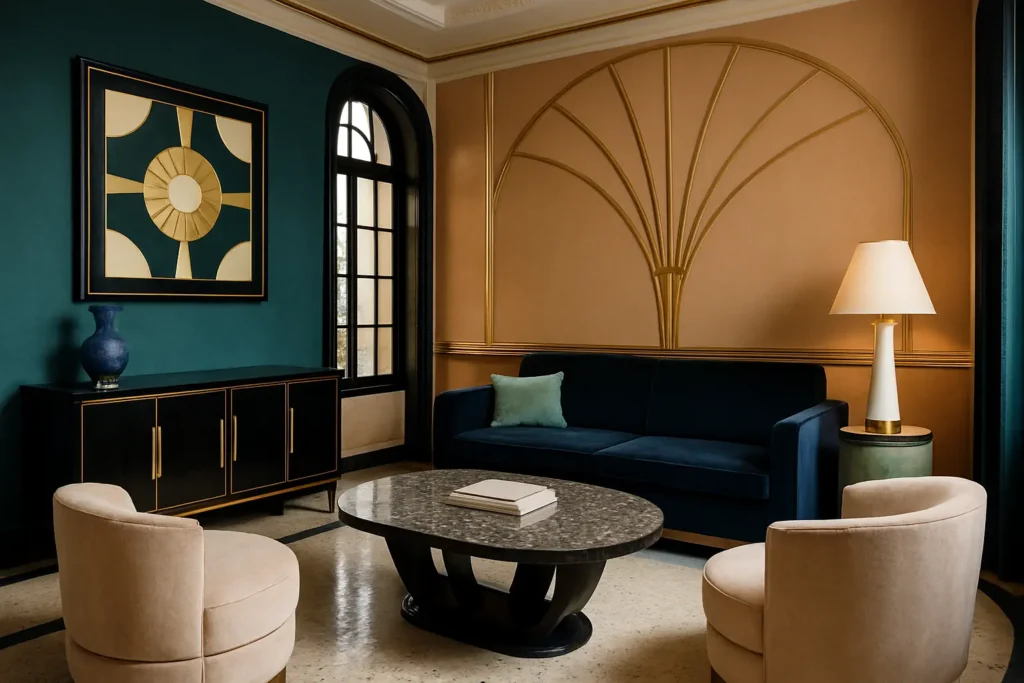
| architectural element | Art Deco Features |
|---|---|
| Ironworks | Geometric patterns, angular shapes |
| Windows | Eyebrow design, geometric stained glass windows |
| Soils | Terrazzo, geometric mosaics |
| Ceilings | Sophisticated moldings, radiant patterns |
Miami Beach's Art Deco District: An Architectural Gem
Miami Beach is home to the most impressive concentration of Art Deco buildings in the United States, with approximately 800 historic buildings. This iconic district, located between 5th and 23rd Streets, was listed on the National Register of Historic Places in 1979, a testament to its exceptional cultural significance.
The "Tropical Deco" variant specific to Miami Beach stands out thanks to its vibrant pastel colors and its patterns inspired by local flora. A stroll along Ocean Drive reveals facades in icy hues of pink, sky blue, mint green, and pale yellow that perfectly capture the luxurious seaside vibe of this neighborhood.

In the 1980s, Leonard Horowitz launched the “Deco Dazzle”, characterized by vibrant pastel tones that have redefined the neighborhood's visual identity. To discover this architectural treasure, begin your visit with the Art Deco Museum and the Welcome Center, which offer an excellent introduction to this unique heritage.
International influence and regional variations
- The “Streamline Moderne” in the United States, more aerodynamic and futuristic
- The "Mediterranean Revival" influenced by Mediterranean architecture
- Art Deco in Hauts-de-France, developed during post-war reconstruction
THE Art Deco style represents the first architectural and decorative movement to achieve truly global influence. Born in France, it quickly spread to the United States before conquering the entire world. This international diffusion gave rise to various regional interpretations, each adapting the fundamental principles of the style to local traditions.
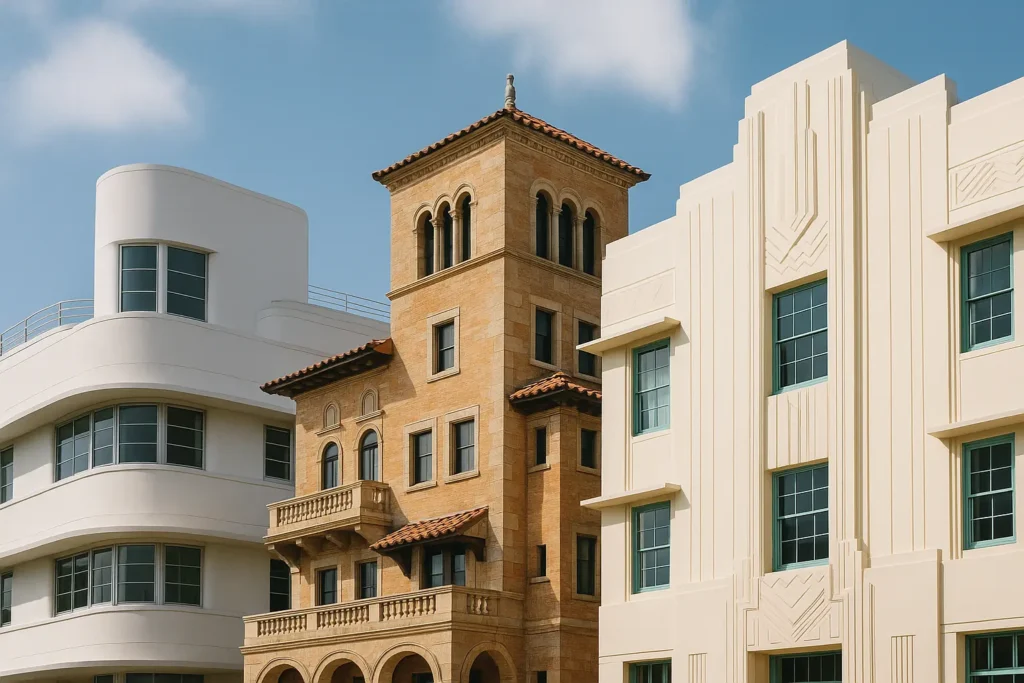
In Hauts-de-France, Art Deco played a crucial role in reconstruction after the First World War. Cities such as Reims and Saint-Quentin boast remarkable architectural ensembles that bear witness to this intense creative period.
Areas of application and cultural influence
The Art Deco style bedroom: elegance and refinement
The Art Deco style transformed every aspect of our daily environment. In architecture, it shaped public buildings, luxury hotels, residential buildings, and private homes. Art Deco furniture and cabinetry are distinguished by their elegant shapes and their impeccable finishes, using precious woods and sophisticated lacquering techniques.
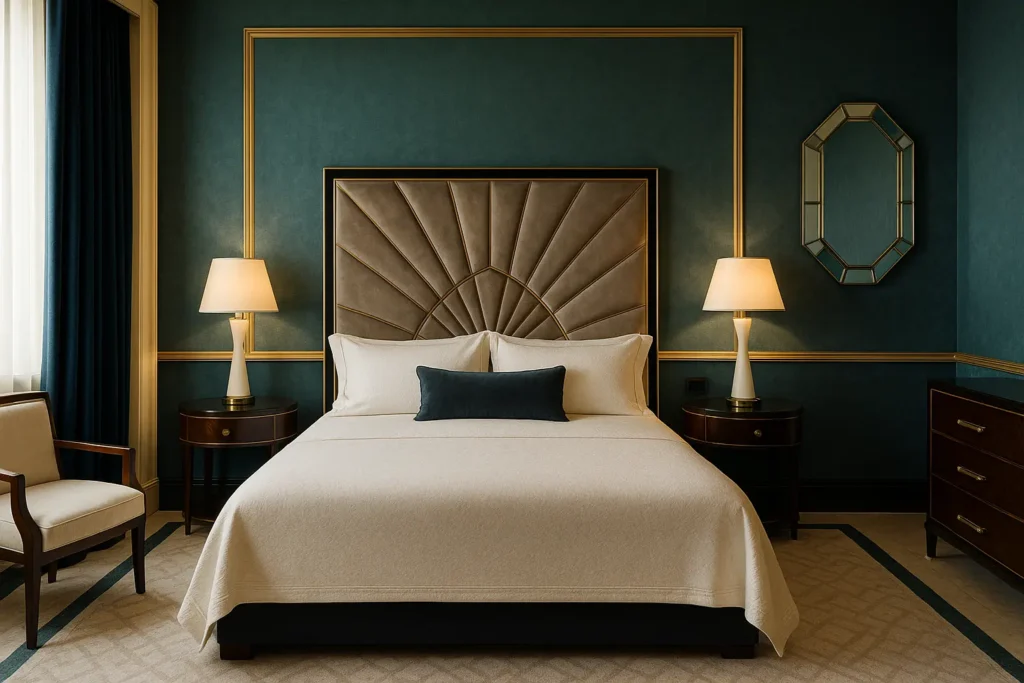
Fashion and haute couture also embraced this aesthetic, as did graphic arts, advertising, jewelry, and goldsmithing. Even luxury ocean liners of the era featured sumptuous Art Deco interiors, symbolizing modern travel and international glamour.
The Art Deco style perfectly embodies the spirit of the Roaring Twenties: a period of prosperity and carefree living celebrating luxury, modern comfort, and technological advancements. The influence of American jazz and iconic figures like Josephine Baker helped define this unique cultural aesthetic.
Prominent figures and contemporary heritage
The Art Deco living room: modern inspiration
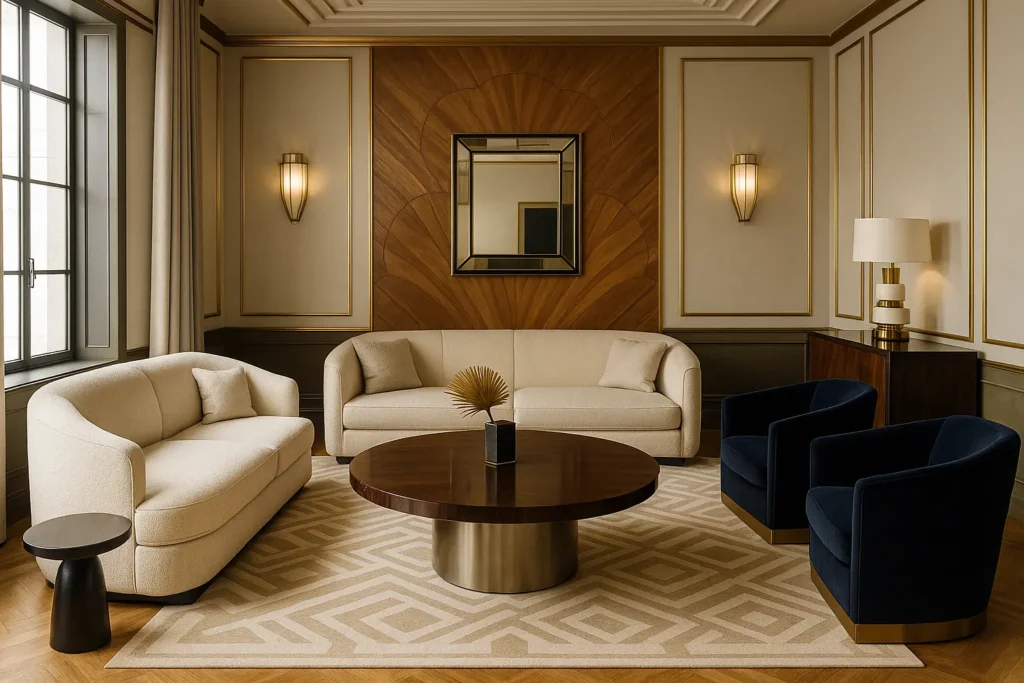
- Iconic designers and architects: Jacques-Émile Ruhlmann, Jean-Michel Frank, Jean Dunand
- Influential artists: Tamara de Lempicka, Sonia Delaunay, Eileen Gray
- Visionary collectors: Jacques Doucet, Jeanne Lanvin, Yves Saint Laurent
Designers such as Jacques-Émile Ruhlmann, Jean-Michel Frank, and Eileen Gray defined the excellence of Art Deco design. Their works now command staggering prices on the art market, with some pieces fetching hundreds of thousands of euros.
The influence of Art Deco persists in contemporary design. We find its elegant geometric lines and its sense of refinement in many current creations. Whether it's an art deco kitchen with chrome finishes or an art deco table for the living room with clean lines, this style continues to inspire decoration lovers in search of timeless elegance.
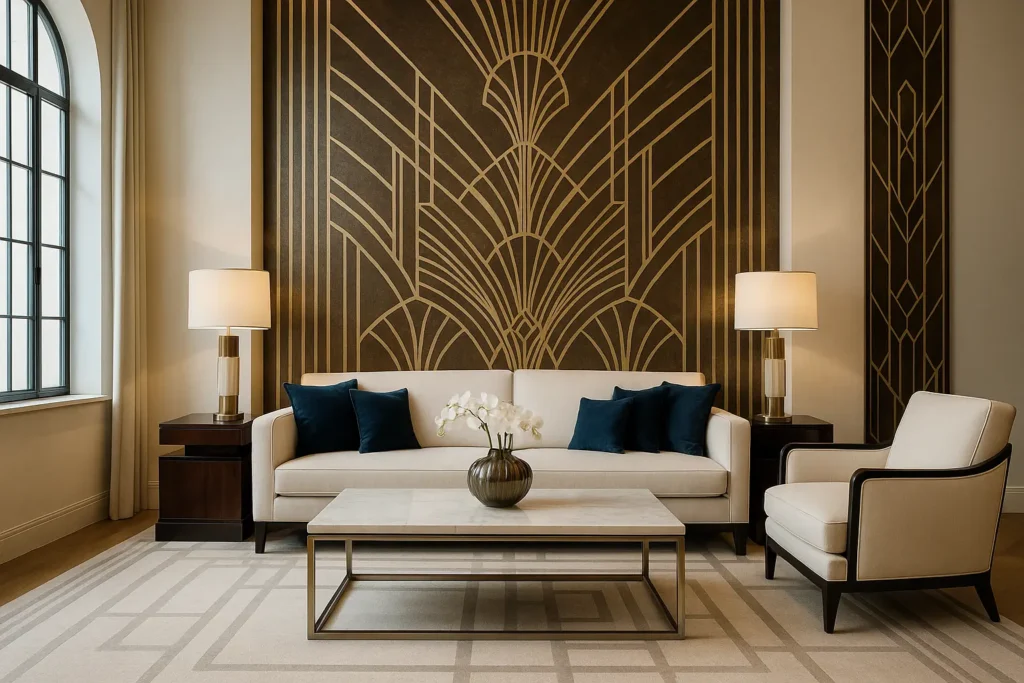
The Art Deco style reminds us that beauty can emerge from symmetry and geometry, offering an enchanting counterpoint to our contemporary quest for authenticity and naturalness. A perfect balance between tradition and modernity that we cherish at La Maison Coloniale.
